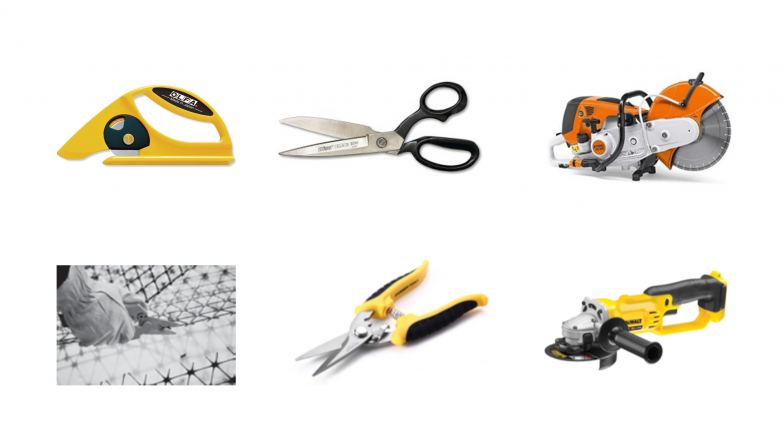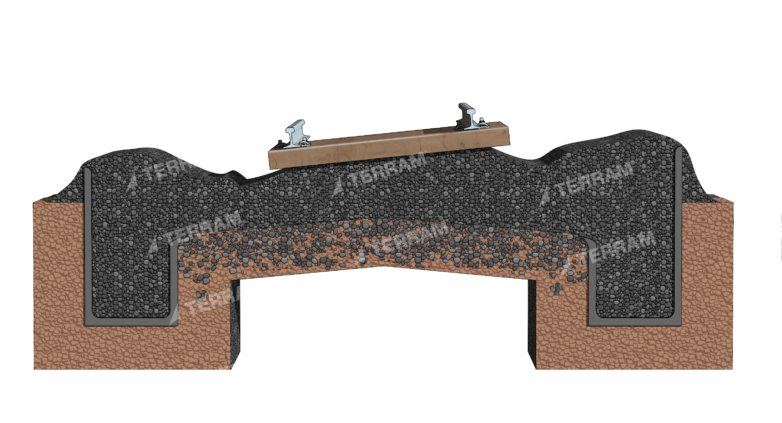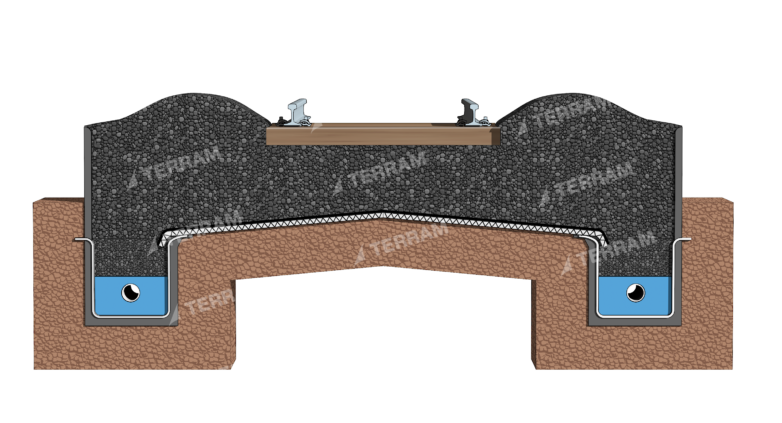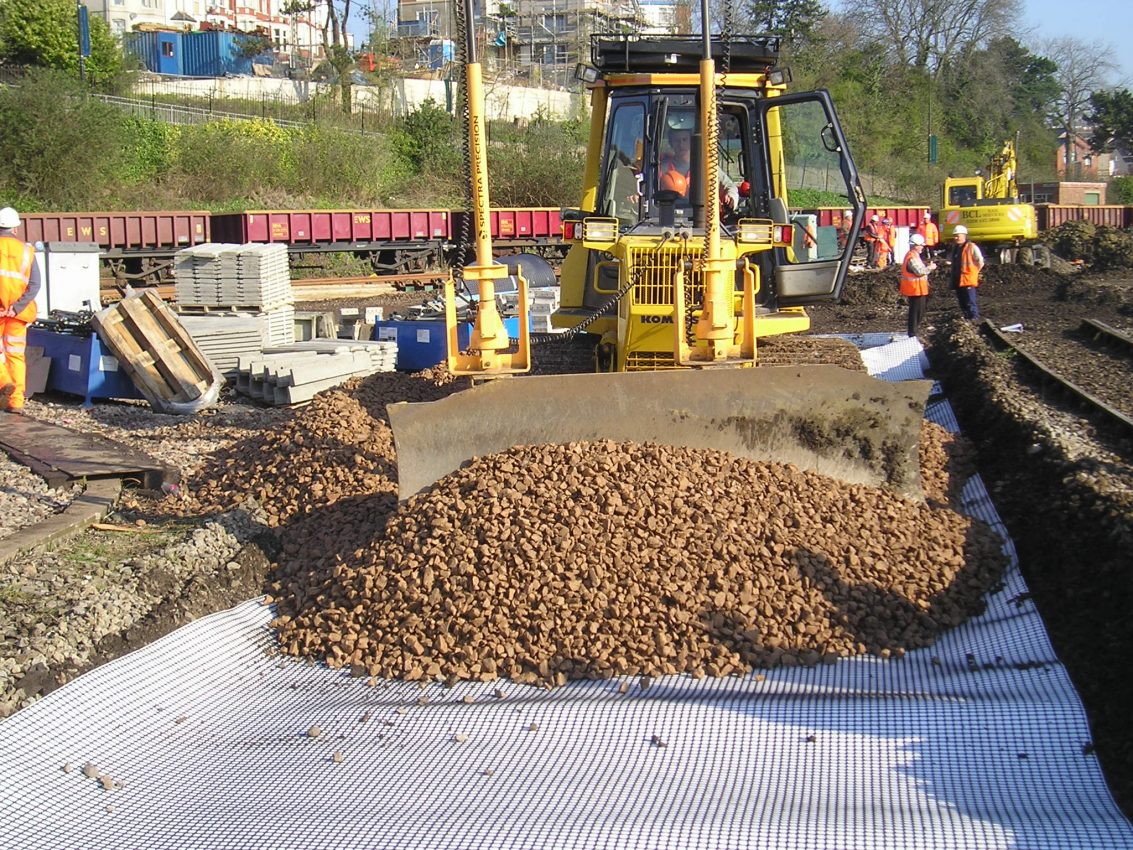Railways
Stabilisation

Frequently Asked Questions
Are Terram products approved by Network Rail and TFL?
All TERRAM PW (Permanent Way), Standard Geotextiles hold Network Rail Acceptance certificates and have associated PADS numbers. TFL (Transport for London) and Network Rail require that all suppliers use of a qualification scheme called RISQS (Railway Industry Supplier Qualification Scheme). TERRAM (trading as Fiberweb Geosynthetics Ltd, part of the Berry Group) are registered with RISQS.
How do we cut the material of Rail Geosynthetics?
A4 Single layers of most TERRAM geosynthetic materials can be cut with sharp scissors or safety knives although regular changes of blades will be needed for long lengths. TERRAM Geocomposites such as PW4LA incorporate a reinforcing geogrid. The ribs of the geogrid mesh are square edged and up to 4mm thick, they can be cut with sharp shears or a disk cutter/angle grinder. Rolls can be trimmed with a petrol cut-off saw but suitable precautions should be taken to ensure the safety of the saw user and others in the vicinity. Wear appropriate personal protective equipment such as gloves and eye protection.

Do we overlap the material of Rail Geosynthetics?
The minimum overlap is 300mm but may be as much as 1.5m depending upon the ground conditions and product being installed. Please refer to the Network Rail Certificate of Acceptance and/or TERRAM specification, design and installation guidance for more details.
Do you supply all rail drainage products?
Our distribution partners supply all rail drainage products including TERRAM geosynthetic materials. Please contact us for their contact details.
What is a Geocomposite?
A relatively thin sheet of two or more materials with a plastic drainage core that provides a high flow path for gas & liquids (usually ground water in Civil Engineering applications). The drainage core is bonded to a geotextile(s) to filter out soil particles and/or a geomembrane on the other side to provide a fluid barrier. Geocomposites are often specified as a value engineered and more sustainable alternative to traditional drainage aggregate.
What makes Terram Geocomposites better than alternatives?
TERRAM Geocomposites have been installed on numerous projects throughout the UK for decades with a proven track record. The extruded HDPE net drainage core has been designed to withstand extremely high compressive loads with minimal settlement and nearly 100% elastic recovery. Alternative Geocomposites such as those manufactured with cuspated cores collapse without recovery at a specific compressive load (crush) making them more susceptible to site damage during installation. Drainage composites with monofilament cores compress significantly under relatively low pressures which may result in surface settlement and significantly reduced flow rates.
What is the right Geocomposite grade to use?
The type of Geocomposite and the grade will depend upon the site conditions and the application. Generally, TERRAM B1, 1B1, 1BZ, 1C1 are used for back of wall vertical drainage applications with ground water seepage. A higher grade Geocomposite may be required when higher ground water flow rates, higher pressures (due to depth of soil fill layers) and lower hydraulic gradients (Geocomposite laid close to horizontal) are expected.
How long will Geocomposites last? (Design life)
When designed, installed and maintained in accordance with the published literature most TERRAM Geotextiles and Geocomposites are sufficiently durable to achieve a design life of at least 100 years in most typical soil conditions. Please refer to DoP (Declaration of Performance) certificates for specific product grades which state the anticipated design life based on independent durability testing.
What grade of Geocell do I need on a slope?
Generally, for slopes up to 30 degrees, grades 35/10 & 35/15 are recommended. For slopes between 30 and 45 degrees, grades 25/10, 25/15, 22/20 are suitable options. Additionally, with the recent addition of Terram HDPE Geocell to our product range, you can also consider the Terram HDPE Geocell option. Please see the Terram Geocell erosion control SDI (specification, design, and installation) guide for more details.
Can Terram Geocells be used to form retaining walls?
Yes, TERRAM geocells can be used to form retaining structures although this is not an application area that we actively promote in the UK market due to historic lack of demand. Different grades of TERRAM Geocells can be manufactured specifically for retaining structure applications but are made to order and there is a minimum order quantity.
Are Terram Geotextile Geocells permeable?
Yes, TERRAM Geotextile Geocells are manufactured from 100% permeable nonwoven geotextile fabric allowing ground water to pass through the cell walls rather than cascading over or underneath causing soil erosion.
Original &
The Best


